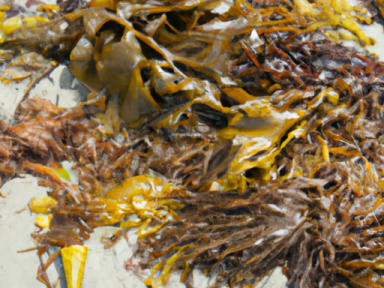
Discover the myriad of edible seaweeds and coastal plants waiting to be harvested and enjoyed
In times of uncertainty and turmoil, it becomes crucial to explore and utilize the abundant resources that nature has to offer. One often overlooked source of nutrition and sustenance is the vast array of edible seaweeds and coastal plants found along our shorelines.
With the world facing increasing challenges such as climate change, dwindling food supplies, and potential disruptions in the global food distribution system, it’s time to tap into the wealth of nutritious plants that thrive in our coastal regions. Edible seaweeds and beach plants are a sustainable and reliable source of food that not only can enhance our diets but also provide a level of self-reliance and resilience in the face of uncertainty.
The Benefits of Edible Seaweeds
Seaweeds, also known as sea vegetables, offer a host of nutritional benefits. Packed with vitamins, minerals, and trace elements, they are a powerhouse of nutrition that rival traditional land-based vegetables. Seaweeds are particularly rich in iodine, which is essential for thyroid health, as well as iron, calcium, magnesium, and vitamin K.
Furthermore, seaweeds contain unique compounds, such as phytonutrients, that possess anti-inflammatory and antioxidant properties. Including seaweeds in your diet can contribute to a strengthened immune system, improved digestion, and increased vitality.
Common Edible Seaweeds
1. Nori: Perhaps most well-known as the wrap used in sushi, nori is a versatile seaweed that can be used in a variety of dishes. It contains a high amount of protein and is rich in vitamins A, B, and C.
2. Kelp: Kelp is a large brown seaweed that can be consumed in various ways. It is a good source of iodine and also contains high amounts of fiber, potassium, and iron.
3. Dulse: With its reddish-brown color and salty flavor, dulse is a popular edible seaweed. It is a good source of protein and contains vitamins A, B, C, and E.
Coastal Plants for Nourishment
In addition to seaweeds, coastal regions are teeming with a diverse range of edible plants. These salt-tolerant plants have adapted to the harsh coastal environment and offer unique flavors and nutritional profiles.
1. Sea Asparagus: Also known as samphire or glasswort, sea asparagus is a succulent plant with a distinctive salty taste. It is rich in vitamins A and C and can be enjoyed raw or cooked.
2. Beach Spinach: Beach spinach, or sea spinach, is a hardy plant that thrives along sandy coastlines. It is packed with minerals such as calcium, iron, and magnesium, making it an excellent addition to salads or cooked dishes.
3. Sea Rocket: This peppery-flavored plant is often found growing near sand dunes. It is high in vitamins A and C and can add a unique twist to salads or sandwiches.
Harvesting and Preparing Edible Seaweeds and Coastal Plants
When foraging for edible seaweeds and coastal plants, it is essential to do so responsibly and sustainably. Here are a few guidelines to follow:
- Obtain proper identification of the plants.
- Harvest only what you need and leave enough for regeneration.
- Collect from clean, unpolluted areas.
- Wash the plants thoroughly to remove any salt or sand.
- Experiment with different cooking methods, such as blanching, sautéing, or incorporating raw in salads, to discover your preferred flavors and textures.
By embracing the opportunities offered by the edible seaweeds and coastal plants found in our surroundings, we can empower ourselves with the knowledge and skills to become more self-reliant. Not only do these plants offer a sustainable source of nutrition, but they also connect us to the natural environment and cultivate a greater sense of resilience in a rapidly changing world.



GIPHY App Key not set. Please check settings